- HomeOur storyOur visionHighlights
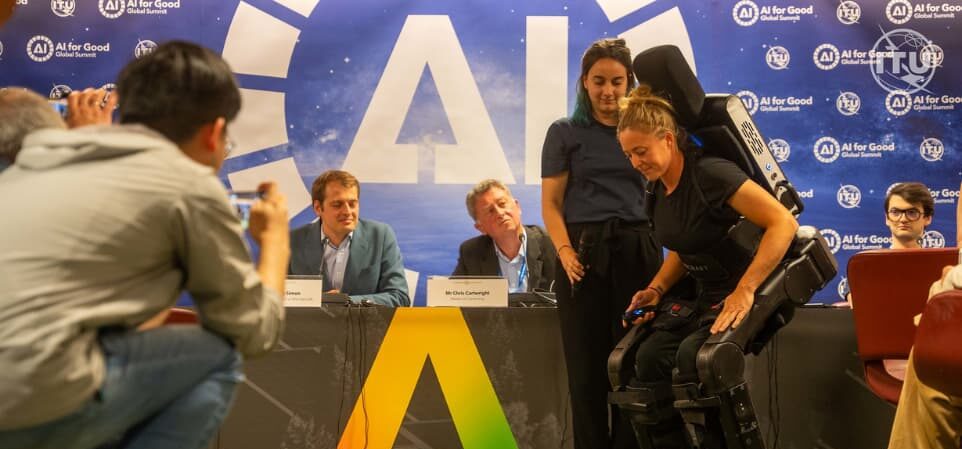
Advancing universal connectivity
As the Internet became widely available in the 1990s, digital life expanded rapidly – bringing new ways to work, learn, and engage. Email, instant messaging, and social media reshaped communication, while digital economies and online communities took root around the world. ITU’s role evolved alongside this shift, with growing attention to the need to ensure everyone, everywhere could take part in this increasingly connected world.
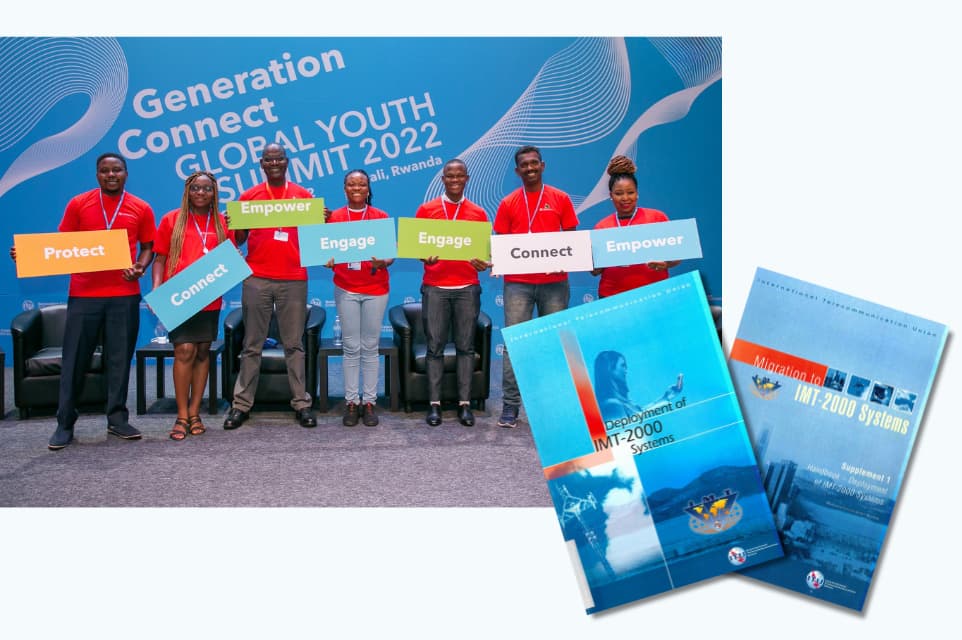
1990
Advancing mobile communications
From analogue cellular networks in the 1980s to digital systems in the early 1990s, the rise of mobile communications transformed how people connected. In 1990, ITU published a recommendation outlining the future of global mobile systems (IMT-2000) — a vision that would become known as 3G. Two years later, the 1992 World Administrative Radio Conference allocated frequency bands to support this new wave of mobile connectivity.
After more than a decade of work led by ITU, an historic milestone was reached at the World Radiocommunication Conference in 2000: Member States unanimously approved the technical specifications for IMT-2000. For the first time, full interoperability of mobile systems worldwide could be achieved, laying the foundation for high-speed wireless services capable of supporting voice, data, and Internet access.
ITU continued guiding the evolution of mobile systems with the approval of IMT-Advanced (4G) in 2012 and IMT-2020 (5G) in 2015. In 2023, the Radiocommunication Assembly adopted Recommendation ITU-R M.2160, establishing the IMT-2030 framework for sixth-generation (6G) systems. IMT-2030 is expected to support immersive experiences, broader coverage, and new forms of digital collaboration.

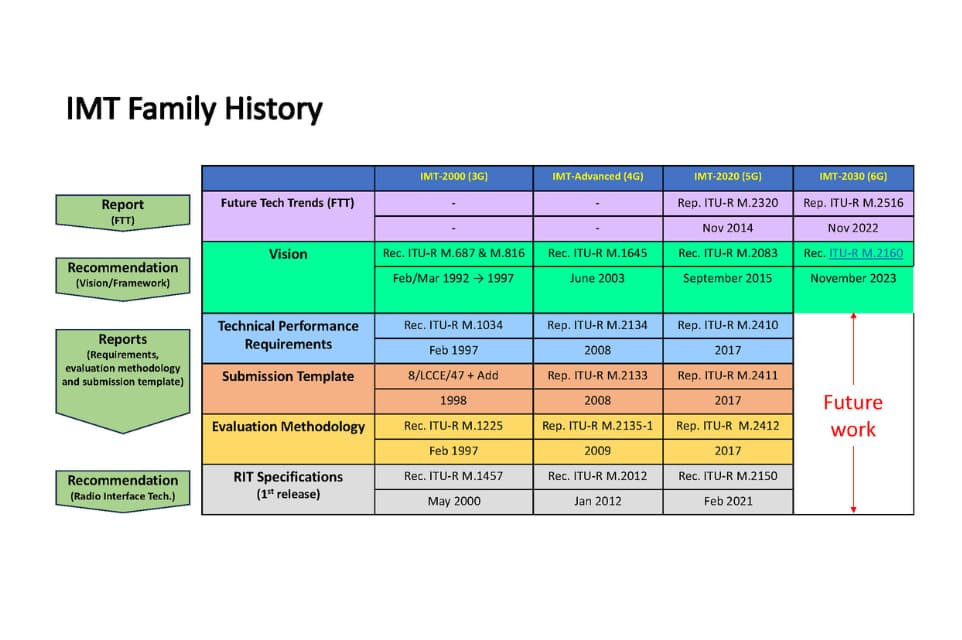
Overview of the evolution of the IMT family of standards – from 3G to 6G – for mobile systems All generations of mobile systems have been standardized through ITU: analogue cellular (1G), digital cellular (2G), mobile broadband systems IMT ‑ 2000 (3G), IMT‑ Advanced (4G), and IMT ‑ 2020 (5G).

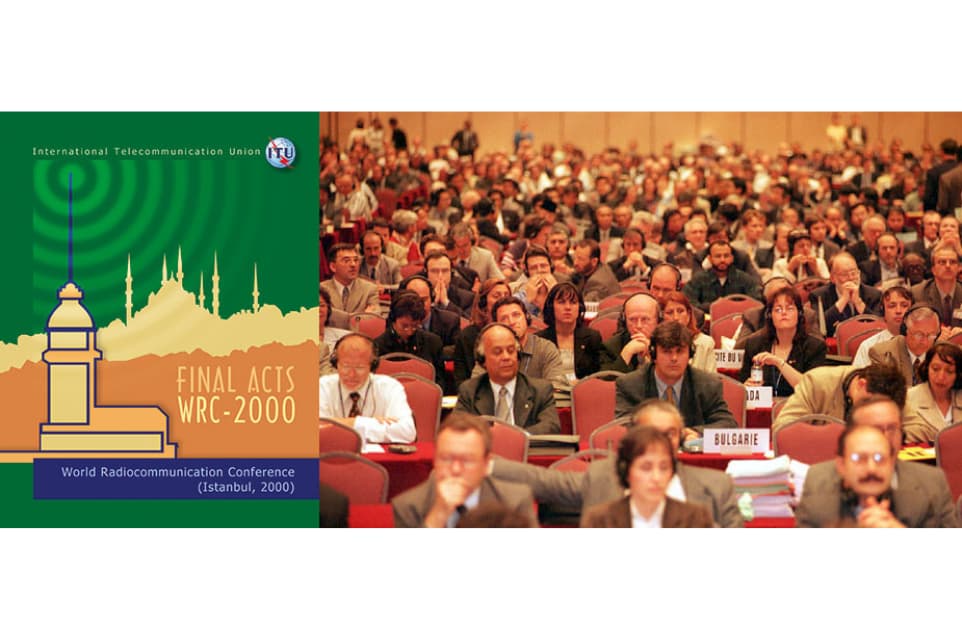
Delegates during the World Radiocommunication Conference in 2000 (WRC-2000) This historic conference approved the global specifications for IMT-2000, effectively giving the green light to the mobile industry worldwide to deploy third-generation networks and services.

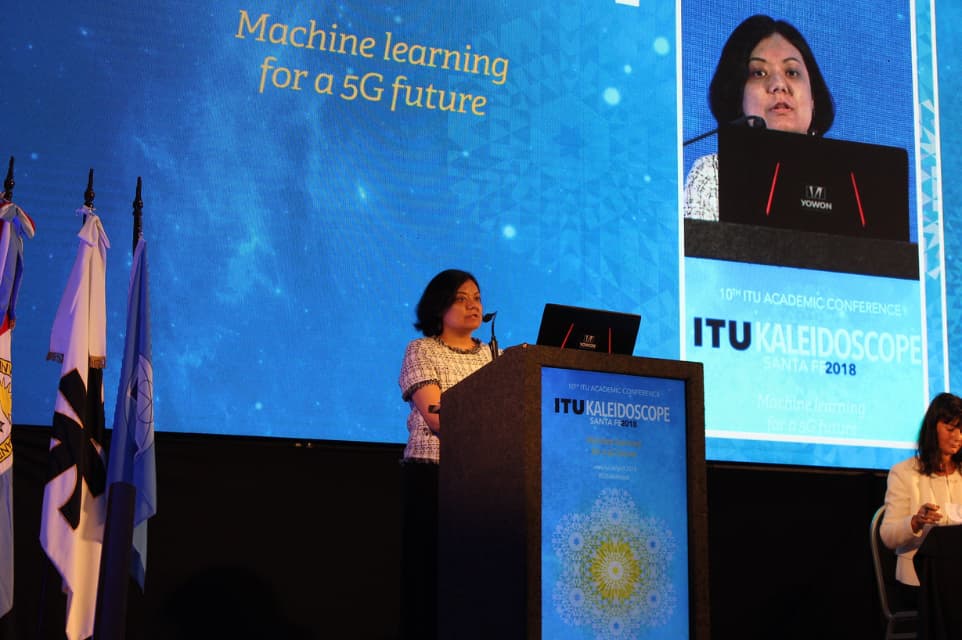
A presenter at the podium during the 2018 Kaleidoscope academic conference which had the theme “Machine learning for a 5G future” ITU Kaleidoscope academic conferences bring together a wide range of views from universities, industry and research institutions on emerging trends in technologies.
1995
Promoting digital accessibility
At Telecom 95, ITU unveiled its first accessible “smart house” exhibit, called 1 in 10, highlighting how technology could support independent living and improve the quality of life for people with disabilities and the elderly. The name reflected a simple fact: at least one in ten people globally lives with a disability.
Digital accessibility is a core principle in ITU’s work, as reflected in its policies, standards, and support for inclusive design. In fact, ITU is the only UN specialized agency with a legislative mandate on accessibility.
In 2010, Member States adopted Resolution 175, committing to improve participation of people with disabilities in ITU’s work, encourage representation in decision-making, and embed accessibility across ICT development. ITU study groups in both the Radiocommunication and Standardization sectors continue to develop technical standards that address a wide range of accessibility needs.

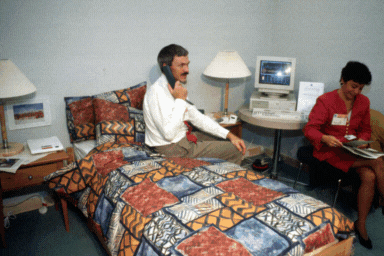
The exterior and interior of the “1 in 10” smart house at TELECOM 95 The “1 in 10” house was comprised of a living-room, dining-room, bedroom, kitchen, bathroom, studio, and a connecting service centre. It featured commercially available supportive technologies alongside household furnishings to showcase the wide range of solutions available to people with different disabilities.

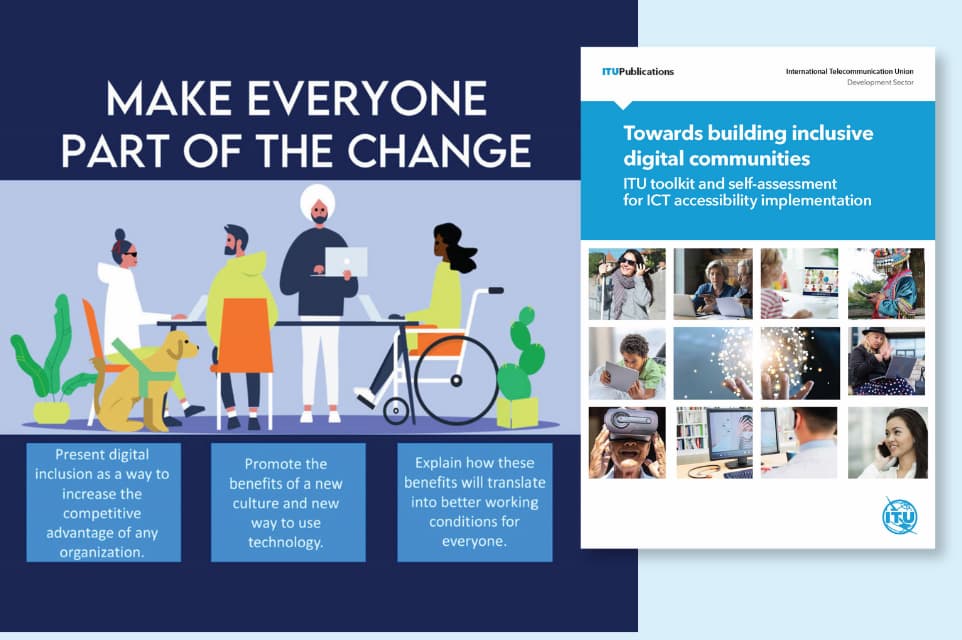
Cover and graphic from “Towards Building Inclusive Digital Communities” an ITU toolkit published in 2023 ITU produces online courses, workshops, publications, and technical standards to promote digital accessibility and inclusion. These resources raise awareness and share knowledge to expand digital access for all, especially youth, women and girls, older persons, people with disabilities, and indigenous communities.

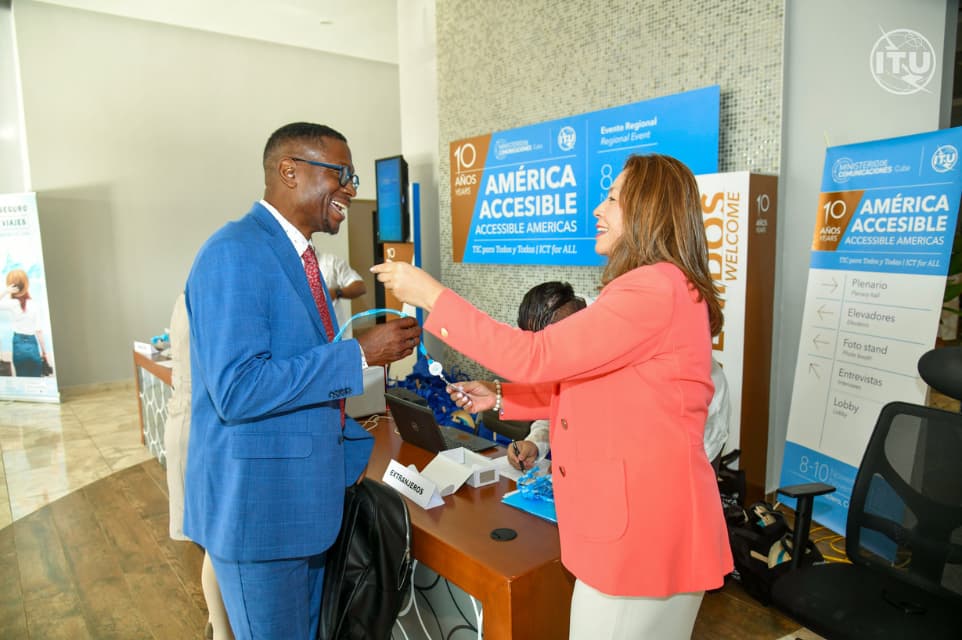
A delegate receives his badge for the 10th Accessible Americas forum held in Varadero, Cuba in 2023 Part of the “ICTs for ALL” series, regional forums such as Accessible Europe, Accessible Americas, and Accessible Arab Region serve as ITU’s main platforms for advancing ICT accessibility, supporting knowledge-sharing, policy dialogue, and digital inclusion across communities.
1998
Supporting gender equality and youth participation
In 1998, ITU demonstrated its commitment to gender equality with the adoption of Resolution 70 by the ITU Plenipotentiary Conference in Minneapolis. That same year, the first meeting of the new Gender Task Force took place at ITU headquarters, marking the start of institutional efforts to increase the participation and leadership of women in the digital sphere.
A few years later, ITU organized its first Youth Forum at Telecom 2001 in Johannesburg. This event, and subsequent Youth Forums, provided a platform for young people to share ideas, voice their concerns, and shape conversations about the future of digital technology.ITU has launched several global initiatives to amplify the voices of women and youth in digital transformation. Girls in ICT Day, first celebrated in 2011, continues to encourage more girls and young women to pursue careers in science, technology, engineering, and math (STEM), while also building digital confidence and skills.
The Generation Connect initiative has grown into a global platform for youth engagement, culminating in events such as the BYND2015 Summit (2013) and the Global Youth Summit (2025) in Varadero, Cuba. These events bring together young voices from around the world to collaborate on digital development challenges and present their ideas to global leaders.
Internally, ITU has also made strides in advancing gender balance across its staff and leadership. In 2023, for the first time in its history, a woman was elected Secretary-General: Ms. Doreen Bogdan-Martin.

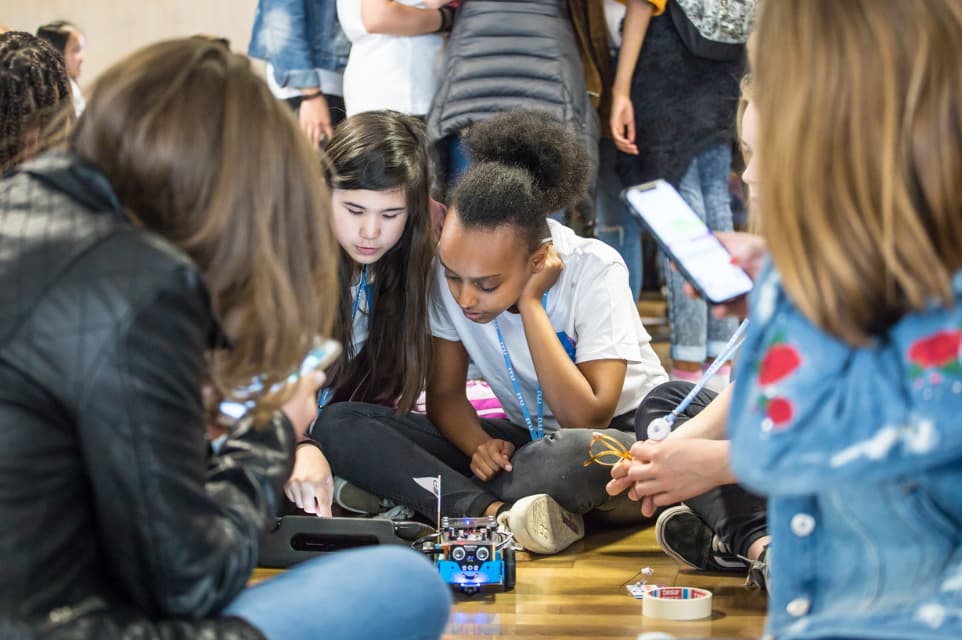
Participants at a robotics workshop during a Girls in ICT Day event in 2018 Girls in ICT Day is celebrated on the fourth Thursday in April, with events taking place around the world. Since 2011, more than 417,000 girls and young women have taken part in over 11,500 events that provide inspiration, support, and learning.

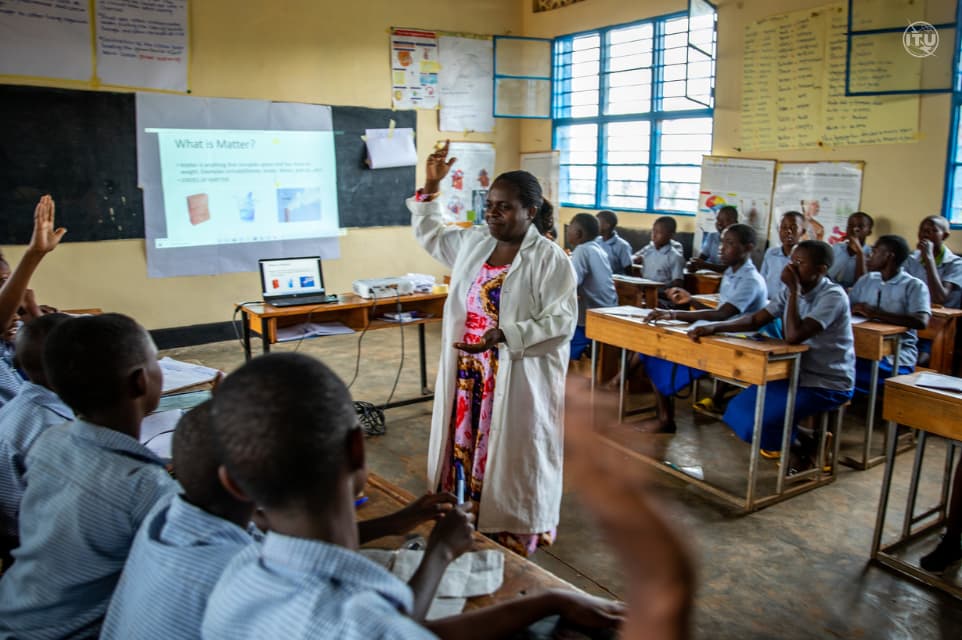
A classroom in Rwanda, where a Giga pilot project took place in 63 schools With the goal of making school connectivity universal and meaningful, ITU and UNICEF launched Giga in 2019: an initiative to connect all the schools in the world to the internet, equipping the future generations with the skills they need to actively participate in digital society.

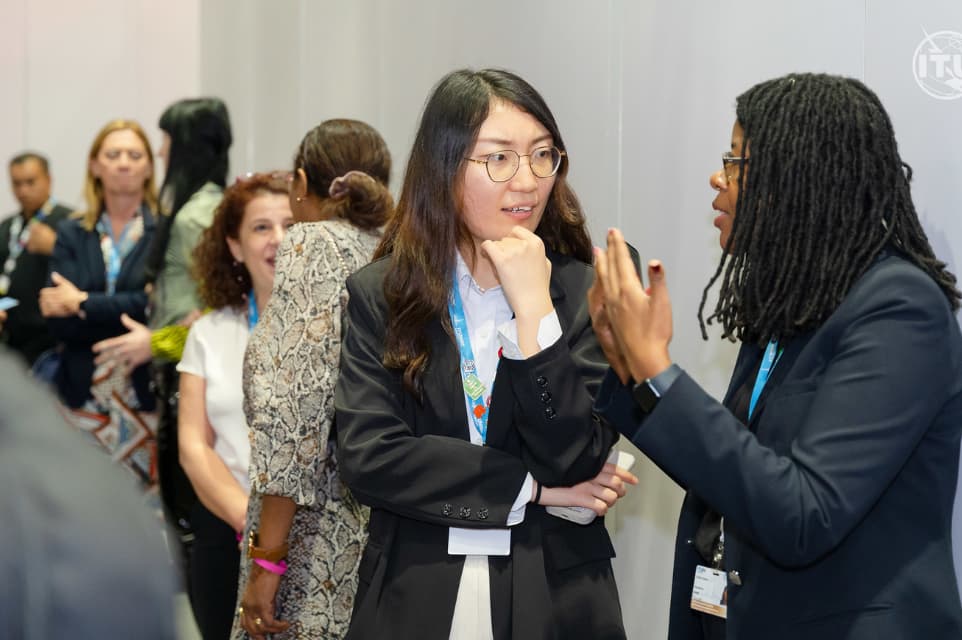
Delegates in discussion during the Network of Women for WRC-23 (NOW4WRC-23) event during the 2023 World Radiocommunication Conference (WRC-23) in Dubai The Network of Women initiative supports greater representation and visibility for women delegates across all ITU sectors (Radiocommunication, Standardization, and Development), offering a space for collaboration, mentorship, and knowledge-sharing.
2003, 2005
Committing to a people-centred, digitally connected global society
In 2003 and 2005, world leaders gathered for the two-phase World Summit on the Information Society (WSIS) in Geneva and Tunis. Led by ITU and convened under the United Nations framework, the summit marked a turning point in how the world approached digital development.
For the first time, governments, civil society, and the private sector aligned around a shared vision of an inclusive digital future – one that put people at the centre of the evolving information society and aimed to harness digital technologies as tools for development.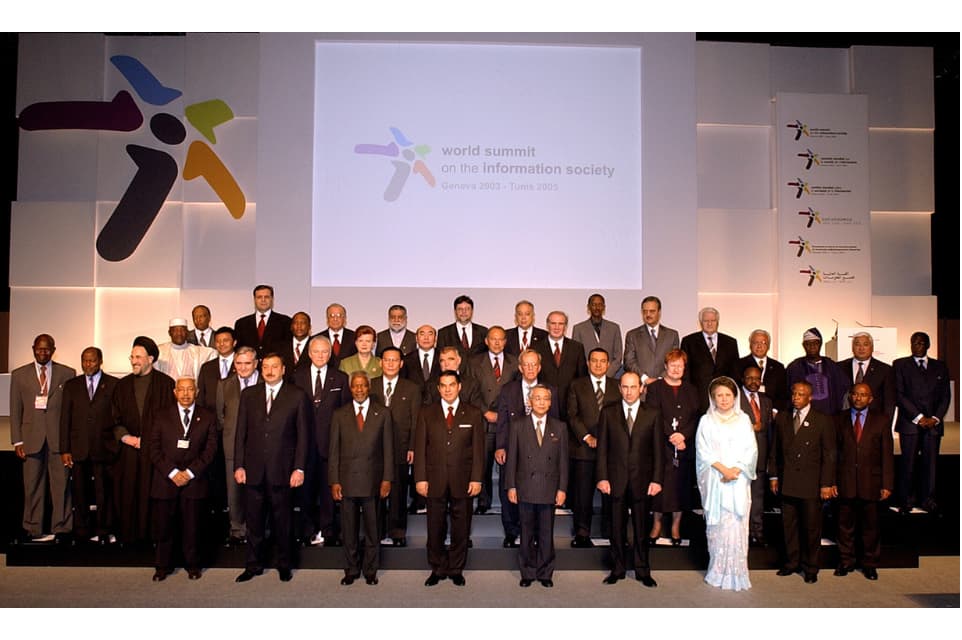
Group photo of Heads of State and Government at the World Summit on the Information Society (WSIS) in 2003 in Geneva For the past two decades, ITU has continued to lead and support initiatives for meaningful, universal connectivity.
In 2010, ITU and UNESCO launched the Broadband Commission for Sustainable Development as a UN advocacy engine for broadband as a driver of progress across all sectors of society. The Commission brings together influential leaders from government, industry, and academia to develop actionable policy recommendations and foster digital cooperation.
In 2023, ITU partnered with UNDP to host the first SDG Digital event at UN Headquarters, highlighting the role of digital technologies in advancing areas such as health, education, and climate resilience.

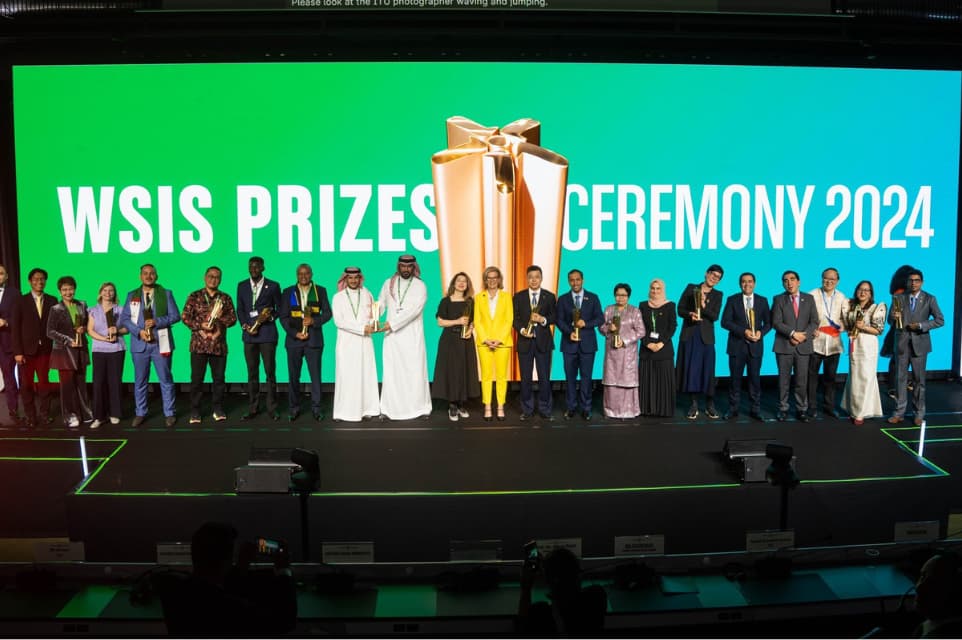
WSIS prizes awarded at the 2024 WSIS Forum in Geneva, Switzerland The WSIS Forum, held annually as part of the broader WSIS process, has evolved into a year-round multistakeholder platform for networking, learning, and engaging in multi-stakeholder discussions and consultations on the implementation of the WSIS action lines.

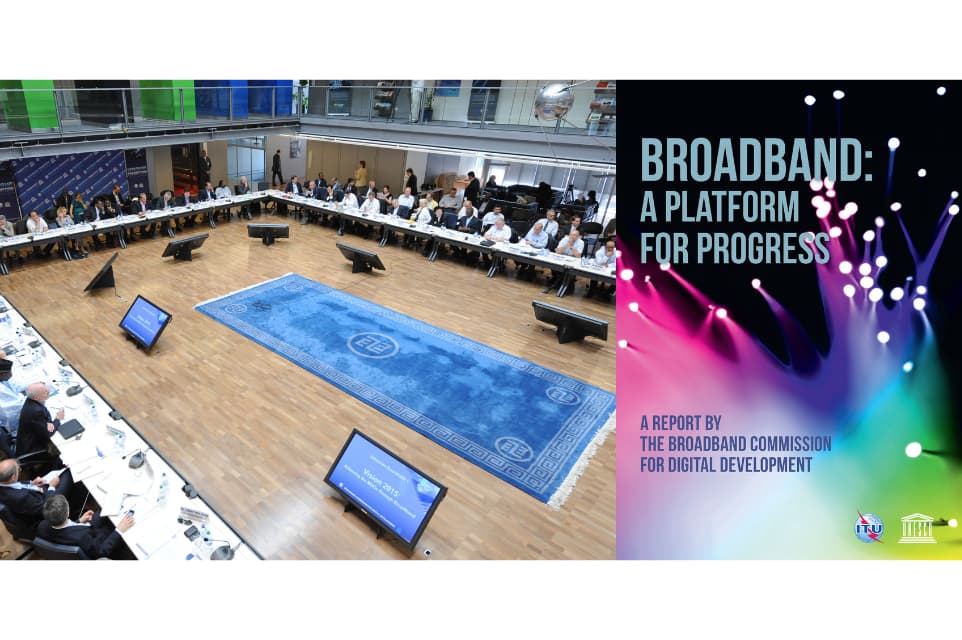
First meeting of the Broadband Commission in 2010 at ITU Headquarters and the cover of first “State of Broadband” report The annual State of Broadband Report of the Broadband Commission is a unique, global snapshot of broadband access, affordability, and use. Published every year since 2011, the report draws on insights from public and private sector leaders to offer concrete policy guidance for expanding broadband connectivity for all.

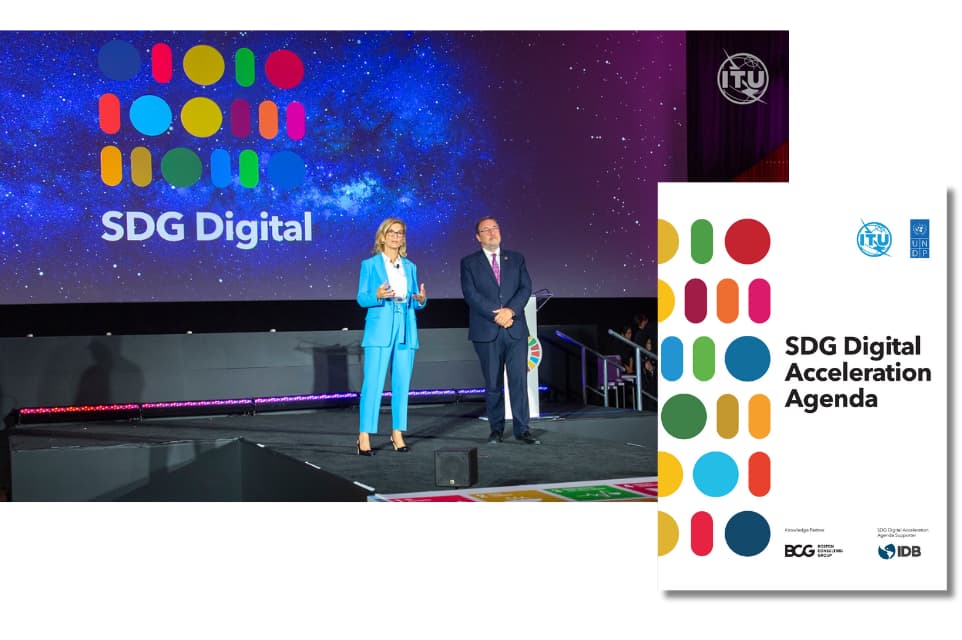
ITU Secretary-General Doreen Bogdan-Martin and UNDP Administrator Achim Steiner at the first SDG Digital event in 2023 at UN Headquarters in New York Launched during the SDG Digital event at UN Headquarters in 2023, the SDG Digital Acceleration Agenda offers a practical roadmap to help countries align digital investment with development priorities.
2017
Shaping the future of AI
In 2017, ITU launched the AI for Good Global Summit in partnership with 40 UN agencies and the Swiss government. Held at ITU Headquarters in Geneva, the Summit provides a neutral platform for the exploration of how artificial intelligence could be used to benefit humanity.
Featuring high-level discussions, hands-on exhibits, and live demonstrations, the Summit facilitates collaboration across sectors and creates space for networking, learning, and showcasing real-world applications of AI.AI for Good has grown into a global platform for collaboration, capacity-building, and innovation in responsible AI.
Through the AI for Good Neural Network – a digital hub connecting over 30,000 participants from 180 countries – stakeholders share insights, explore emerging trends, and build partnerships across sectors. Supported by 47 UN partners, the platform features programming on topics ranging from climate modeling to brain–machine interfaces.
The initiative continues to evolve through new formats and focus areas. The Robotics for Good Youth Challenge is the leading UN-based educational robotics championship where students design, build, and program a robot to complete a mission based on a selected global challenge.
The AI Skills Coalition serves as an online platform for AI education and capacity building, encouraging inclusive participation in the AI revolution.
With the launch of Quantum for Good, ITU has expanded its focus on how next-generation technologies, like quantum computing, can be applied to solve complex global challenges in ways that benefit humanity. Meanwhile, AI Governance Day convenes global experts to tackle regulatory challenges and promote transparent, inclusive approaches to AI oversight.

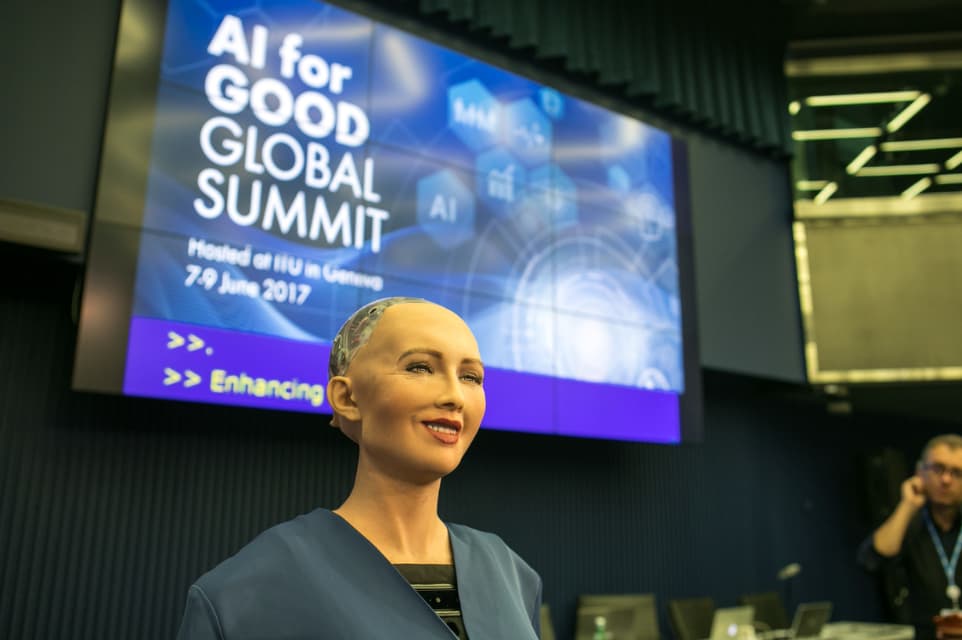
Sophia, a robot, speaking at the first AI for Good Global Summit, which was held in 2017 at ITU headquarters in Geneva, Switzerland 
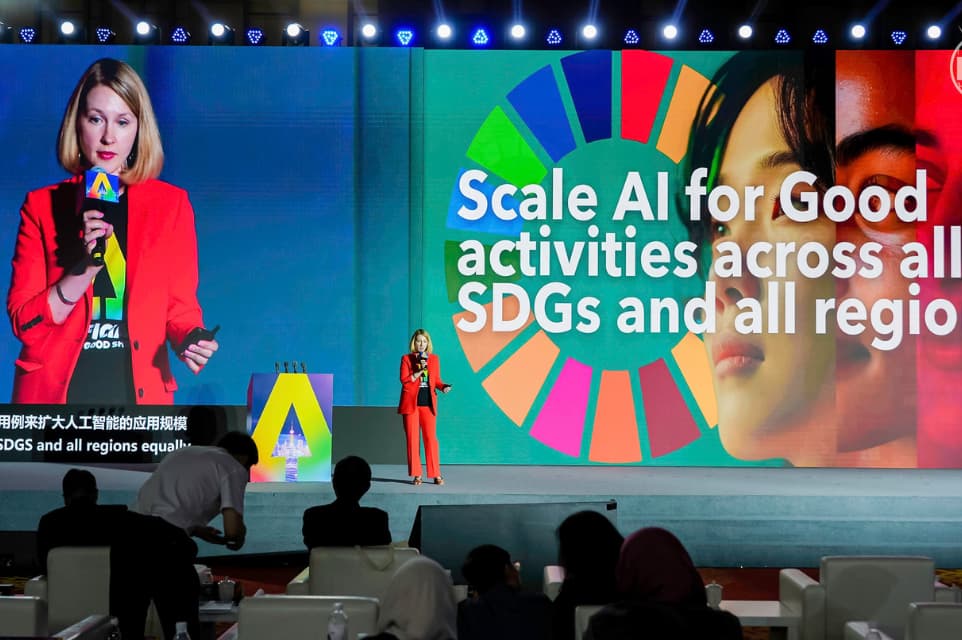
An AI for Good Innovate for Impact session at the World Artificial Intelligence Conference in Shanghai in 2024 
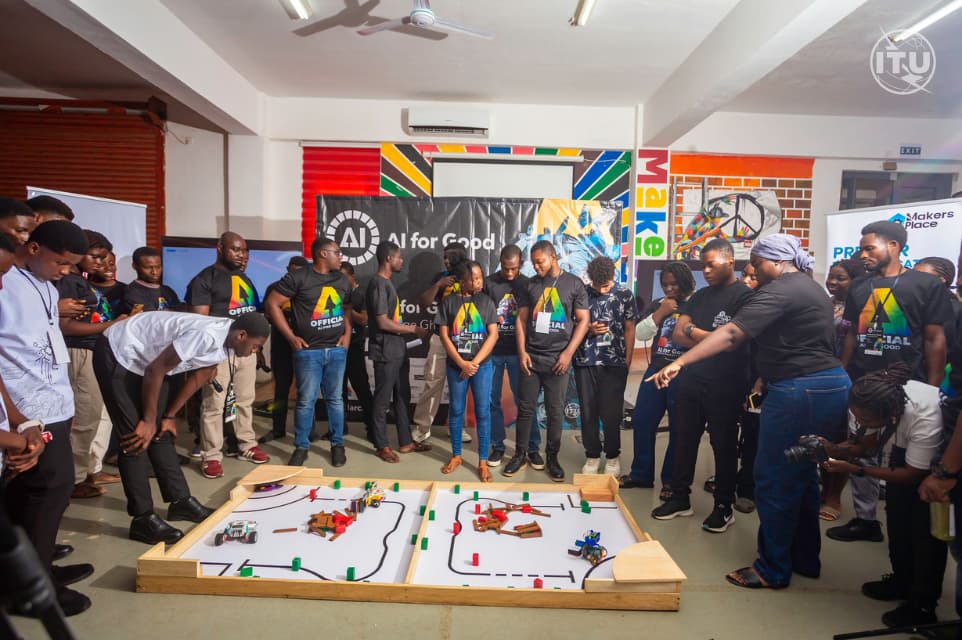
Teams demonstrate their robots during the Robotics for Good Youth Challenge Ghana in Abelenkpe in 2025